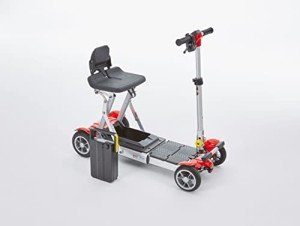5 The 5 Reasons Mobility Devices Is Actually A Positive Thing

Understanding Mobility Devices: Enhancing Independence and Quality of Life
In today's busy world, the desire for mobility is universal. However, particular medical conditions or age-related challenges can hinder movement, causing an ongoing search for assistance. Mobility devices serve as important tools to enhance self-reliance, improve quality of life, and make it possible for people to engage totally in their neighborhoods. This post provides a detailed introduction of mobility devices, including their types, features, choice requirements, and more.
Types of Mobility Devices
Mobility devices vary from easy aids to complex devices, tailored to satisfy different needs. Below is a table summing up common types of mobility devices:
| Type of Device | Description | Perfect For |
|---|---|---|
| Walkers | Four-legged assistance devices that supply exceptional stability while walking. | Individuals needing additional assistance. |
| Walking sticks | Single or three-legged sticks that enhance balance and support walking. | Those with small mobility problems. |
| Wheelchairs | Seats mounted on wheels, offered in handbook and electric versions. | Individuals with restricted or no mobility. |
| Scooters | Electric automobiles developed for outdoor use and ease of navigation. | Those who can't stroll cross countries. |
| Crutches | Devices that help people transfer weight away from a hurt leg. | Individuals recuperating from leg injuries. |
| Rollators | Walkers with wheels, seats, and brakes for improved mobility. | Users requiring rest options while strolling. |
| Lift Chairs | Reclining chairs that help users in standing and taking a seat. | Seniors or those with mobility restraints. |
| Mobility Scooters | Small electric automobiles for restricted mobility, often utilized outdoors. | Individuals requiring assistance over fars away. |
Key Features of Mobility Devices
When picking a mobility gadget, numerous key features must be thought about to ensure optimum performance and ease of use:
- Weight Capacity: Understanding the device's weight restriction is important for security and efficiency.
- Adjustability: Devices should be adjustable in height and width to fit the user easily.
- Portability: Lightweight and foldable alternatives are essential for users who travel or need transportation.
- Stability and Safety: Look for functions like anti-tip wheels and sturdy structures to enhance security.
- Alleviate of Use: Simple systems and easy to use styles can make a considerable distinction in everyday usage.
- Convenience: Ergonomic styles and cushioned seats can enhance the user experience.
Picking the Right Mobility Device
Choosing the right mobility device can be an overwhelming task. Here are some steps to assist the decision-making procedure:
- Assess Needs: Evaluate the individual's mobility difficulties and everyday activities.
- Seek advice from a Professional: Engage health care specialists who can provide suggestions based upon the person's physical condition.
- Trial Options: If possible, trial various devices to determine comfort and performance.
- Evaluation Budget: Consider the expense of the device, including any extra functions or adjustments needed.
- Research Options: Determine the very best brand names and designs by checking out reviews and contrasts.
Table: Comparative Analysis of Popular Mobility Devices
| Gadget | Benefits | Drawbacks |
|---|---|---|
| Walkers | Outstanding stability, promotes strolling. | Large, might restrict motion in small spaces. |
| Canes | Lightweight, improves balance. | May not offer adequate assistance for serious mobility issues. |
| Wheelchairs | Suitable for those with substantial mobility limitations. | Can be cumbersome, especially in indoor environments. |
| Scooters | Great for outside usage, easy to maneuver. | Limited indoor usability, heavier. |
| Rollators | Provides rest choice, easy to move. | May need more space than traditional walkers. |
| Lift Chairs | Comfy, helps transition from sitting to standing. | More expensive, larger footprint. |
Often Asked Questions (FAQs)
1. What is a mobility device?
A mobility device is any tool created to assist individuals in moving and browsing their environment. This consists of walkers, wheelchairs, scooters, and crutches.
2. How do I understand which mobility device is best for me?
Consider your specific mobility challenges, physical capabilities, and lifestyle needs. Consulting with collapsible scooters can also offer tailored recommendations.
3. Are mobility devices covered by insurance coverage?
Numerous insurance plans, consisting of Medicare, might cover particular mobility devices. It's essential to talk to your insurance coverage supplier for particular protection details.
4. Can I lease a mobility gadget instead of buying one?
Yes, numerous medical supply shops and drug stores use leasings for mobility devices. This choice is useful for people with temporary mobility problems.
5. How can I maintain my mobility device?
Routine maintenance is important. It consists of cleaning up the device, looking for wear and tear, and guaranteeing all parts are functioning properly.
The Impact of Mobility Devices on Quality of Life
Mobility devices considerably enhance the lifestyle for people with restricted mobility. They foster independence, motivate social interaction, and improve access to essential services and leisure activities.
- Increased Independence: Users can browse their areas, participate in events, and take part in hobbies without counting on others.
- Social Engagement: Mobility devices help with involvement in celebrations, therefore combating sensations of isolation.
- Boosted Safety: Devices supply stability and decrease the risk of falls, promoting user confidence.
Mobility devices are more than just tools for motion; they are entrances to independence and quality living. By comprehending the different types of mobility aids available, their key features, and considerations for picking the best device, people can make informed choices about their mobility requires. Eventually, the best mobility gadget can result in a more active, satisfying life. Whether it's a walker, wheelchair, or scooter, the best option contributes significantly to boosting the mobility and independence of users.

